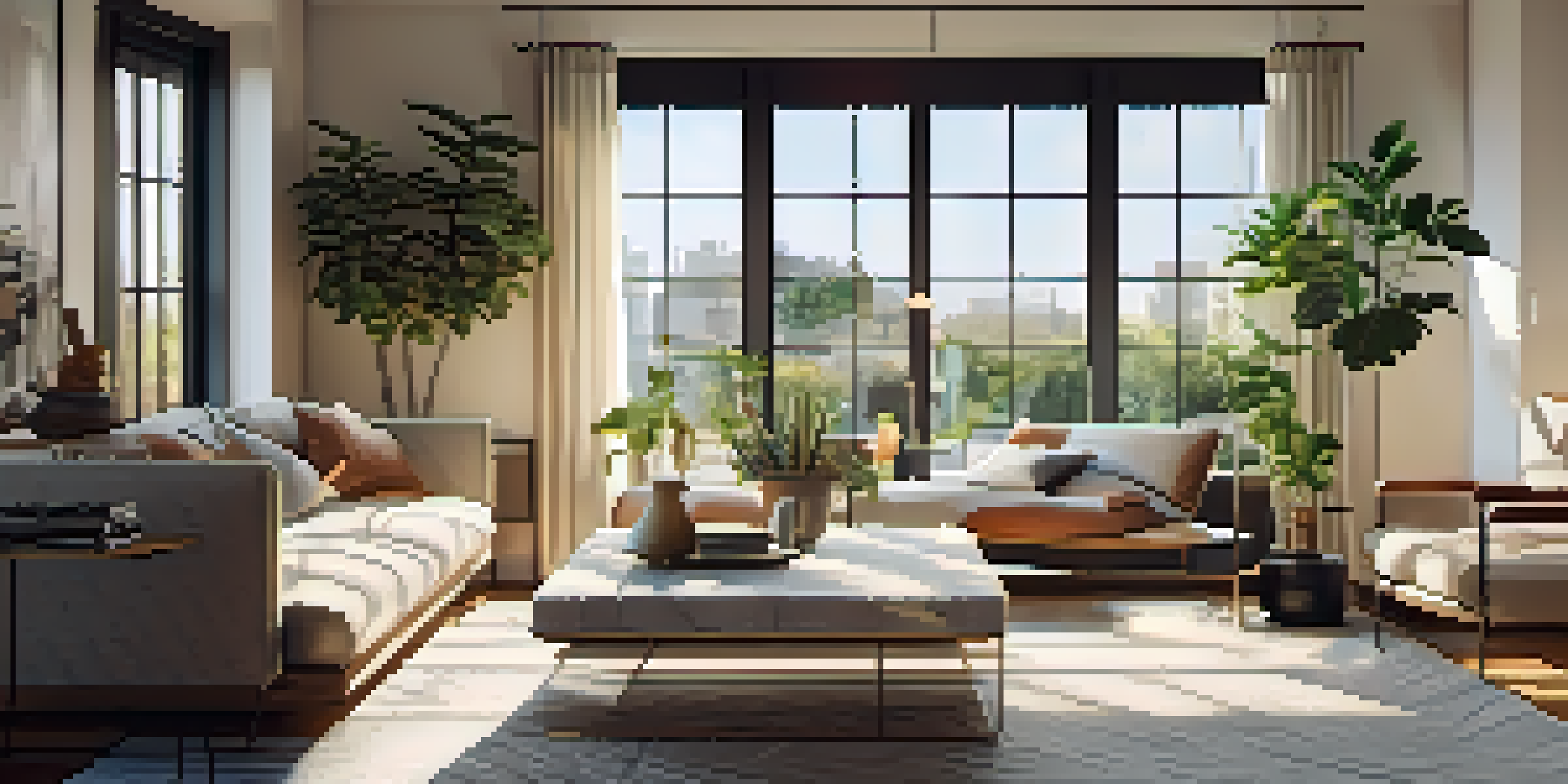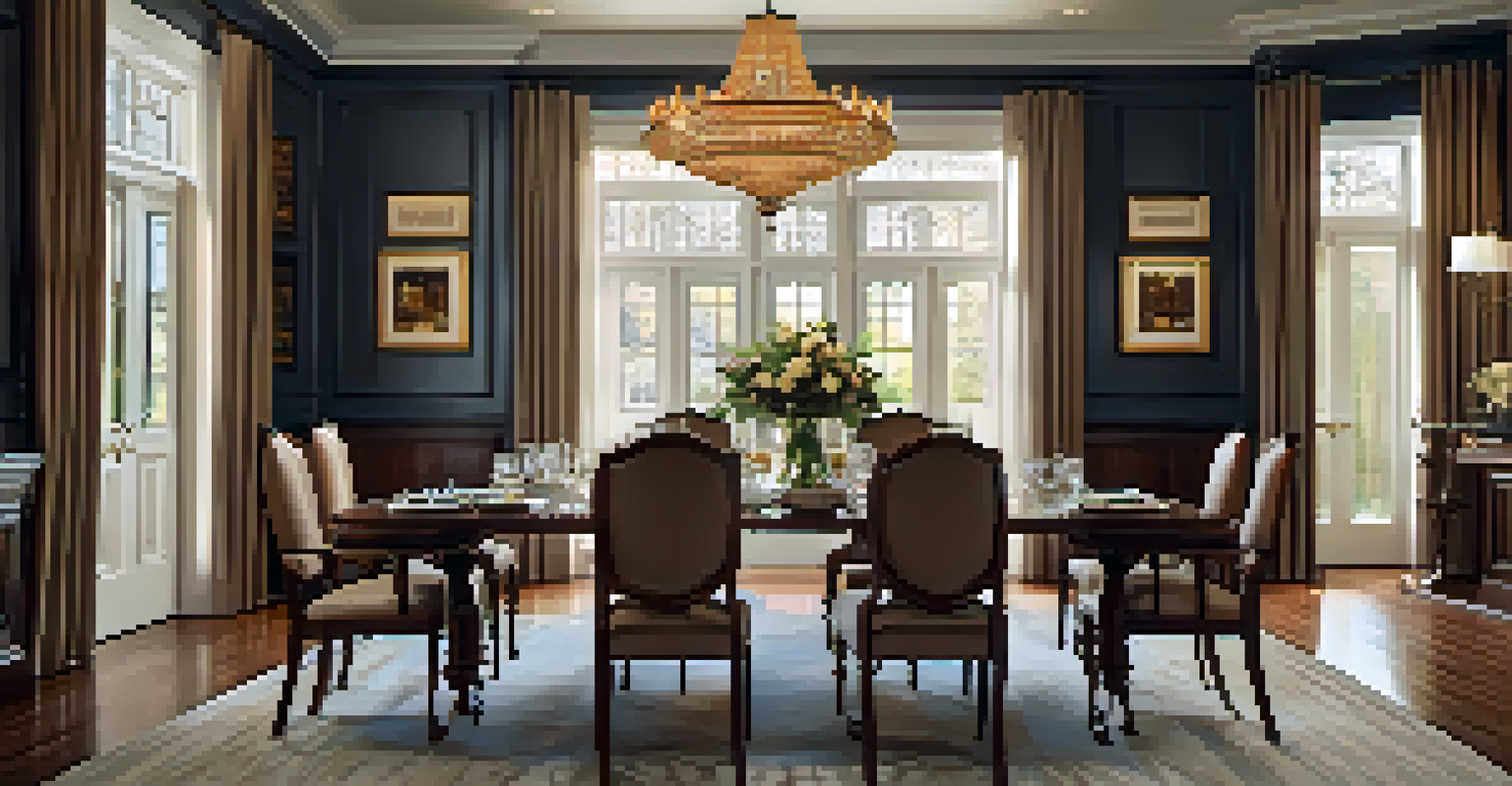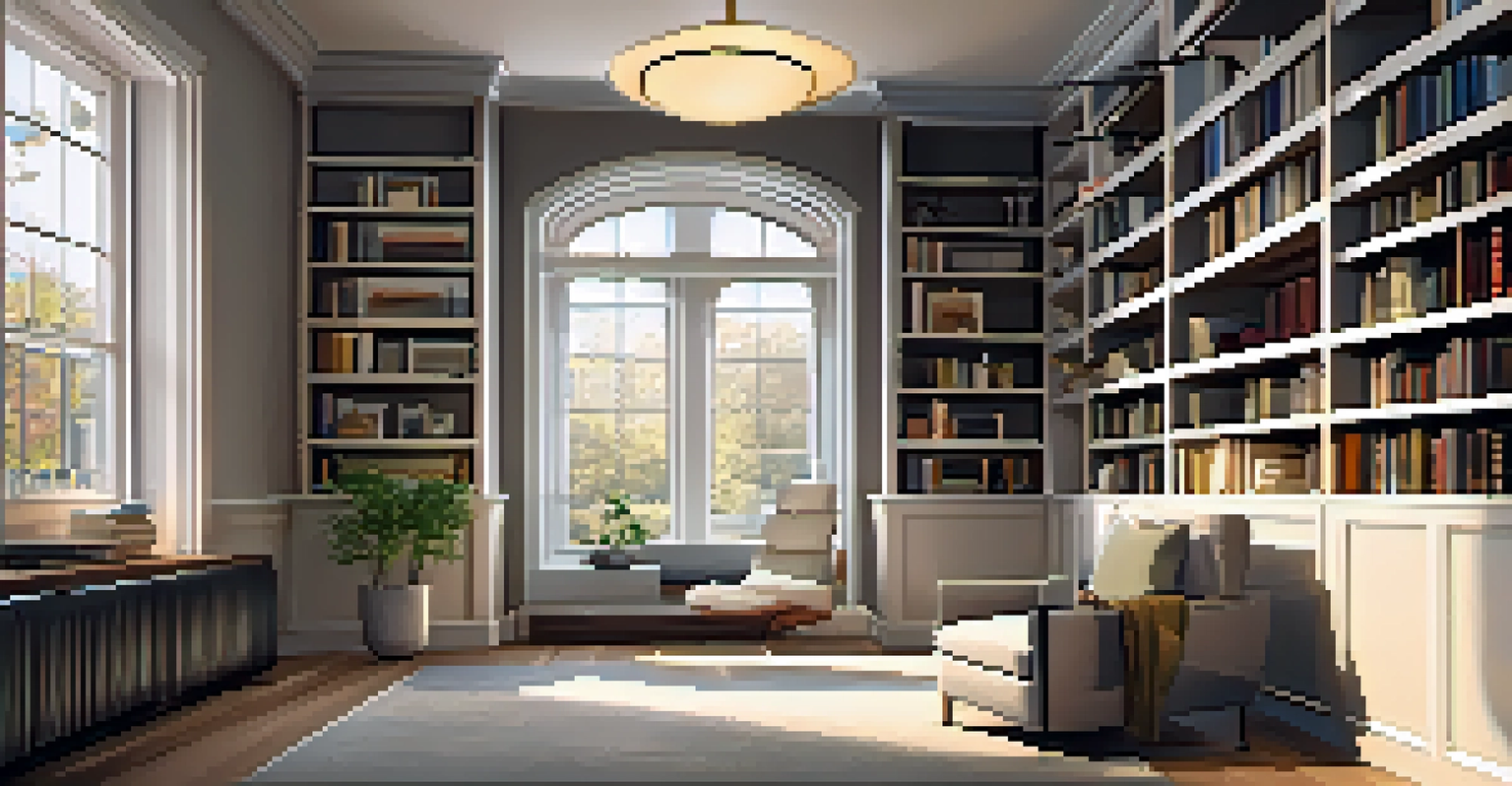The Role of Architectural Lighting in Timeless Interiors

Understanding Architectural Lighting and Its Importance
Architectural lighting refers to the deliberate design of lighting within a space to enhance its aesthetics and functionality. Think of it as the hidden brushstrokes that bring a painting to life. Without the right lighting, even the most beautifully designed interiors can feel lifeless or uninviting.
Lighting is the first layer of design; it sets the mood and creates a sense of place.
This type of lighting is not just about illumination; it's about creating an atmosphere that resonates with the essence of the environment. By strategically placing light sources, designers can highlight features, create focal points, and evoke emotions. This approach ensures that every corner of a room contributes to a cohesive design narrative.
In timeless interiors, the importance of architectural lighting cannot be overstated. It serves as a tool that harmonizes different elements of design while providing functionality. Just like a well-composed symphony, the right lighting can elevate an interior from ordinary to extraordinary.
Creating Ambiance with Layered Lighting Techniques
Layered lighting involves combining different types of light sources to create depth and interest in a space. Picture a well-cooked dish where each ingredient plays a crucial role in flavor; similarly, ambient, task, and accent lighting work together to enhance the overall feel of a room. This technique allows for versatility in how a space is experienced throughout the day.

Ambient lighting provides the overall illumination, while task lighting focuses on specific areas where activities occur, such as reading or cooking. Accent lighting draws attention to artwork or architectural details. By layering these types of lighting, designers can shift the mood of a room seamlessly, making it suitable for various occasions.
Architectural Lighting Enhances Spaces
Strategically designed lighting not only illuminates but also elevates the aesthetic and functionality of interiors.
In timeless interiors, the use of layered lighting ensures that the space remains functional yet inviting. This adaptability means that whether it's a cozy evening or a lively gathering, the right ambiance can be achieved effortlessly.
The Influence of Natural Light on Interior Design
Natural light is a critical component of architectural lighting and can profoundly influence interior spaces. Imagine waking up in a room flooded with morning sunlight; it instantly elevates your mood. Designers often aim to maximize natural light to create a welcoming and vibrant environment.
Good lighting can transform the ordinary into the extraordinary.
Incorporating large windows and skylights can enhance the flow of natural light, making spaces feel larger and more open. This approach not only reduces the need for artificial lighting during the day but also creates a connection with the outdoors. The interplay between natural and artificial light can bring out the best features of a space.
Timeless interiors often celebrate the beauty of natural light, using it as a design element rather than just a source of illumination. By harmonizing artificial lighting with natural light, designers can create a warm, inviting atmosphere that breathes life into the interior.
Highlighting Architectural Features Through Lighting
Architectural features, such as beams, columns, or moldings, can be accentuated through thoughtful lighting design. Think of these features as the bones of a structure; they provide the framework for the overall aesthetic. By using accent lighting, designers can highlight these elements and add dimensionality to the space.
For instance, wall sconces can draw attention to a textured wall, while spotlights can illuminate unique architectural details. This approach not only enhances visual interest but also reinforces the design narrative of the interior. Such thoughtful illumination creates a sense of sophistication and timelessness.
Layered Lighting Creates Ambiance
Combining ambient, task, and accent lighting allows for versatile mood shifts in a space, making it suitable for various occasions.
In timeless interiors, lighting plays a crucial role in showcasing the craftsmanship and artistry of architectural elements. When done right, this creates a lasting impression and elevates the overall aesthetic of the space.
Using Color Temperature to Set the Mood
Color temperature refers to the warmth or coolness of light, measured in Kelvins (K). Warmer tones (below 3000K) create a cozy, inviting atmosphere, while cooler tones (above 4000K) can evoke focus and clarity. Understanding how to manipulate color temperature is essential for creating the desired ambiance in a timeless interior.
For example, using warm lighting in living spaces can make them feel more inviting and relaxed, perfect for gatherings with family and friends. Conversely, cooler lighting in workspaces promotes concentration and productivity. This flexibility allows designers to curate experiences tailored to the functions of each room.
In timeless interiors, the careful selection of color temperature can significantly influence how a space is perceived. A well-lit room that feels just right can leave a lasting impression on anyone who enters.
Energy Efficiency and Sustainable Lighting Solutions
As the world increasingly prioritizes sustainability, energy-efficient lighting solutions have become essential in architectural design. LED lights, for instance, consume significantly less energy than traditional incandescent bulbs while lasting much longer. This makes them not only a smart choice for the environment but also for your wallet.
Incorporating smart lighting systems can further enhance energy efficiency. These systems allow users to control lighting remotely or set schedules, ensuring that lights are only on when needed. This approach aligns perfectly with the modern ethos of responsible living while maintaining timeless design principles.
Natural Light Connects Interiors Outdoors
Maximizing natural light through design elements like windows and skylights fosters a vibrant atmosphere that blurs the line between indoors and outdoors.
Timeless interiors can marry elegance with sustainability, demonstrating that you don't have to sacrifice style for eco-friendliness. By choosing energy-efficient lighting options, designers can create beautiful spaces that are also kind to the planet.
The Role of Lighting in Defining Zones within Spaces
In open-concept interiors, lighting plays a crucial role in defining different zones within a single space. Imagine a cozy nook for reading illuminated by a warm pendant light, contrasted with a bright area for dining. This strategic use of lighting helps to create functional areas while maintaining an overall cohesive design.
By using different lighting styles and intensities, designers can guide the flow of movement and interaction within a space. For instance, a brighter light over the dining table can signal a gathering area, while softer lighting in the living room can create a relaxed atmosphere for conversation. This intentional zoning enhances the usability of the interior.

In timeless design, the thoughtful definition of zones through lighting contributes to a harmonious living experience. It's about creating spaces that feel both inviting and functional, ensuring that each area serves its purpose beautifully.
Conclusion: The Lasting Impact of Architectural Lighting
Architectural lighting is more than just a practical necessity; it is a powerful design element that can transform interiors. It has the ability to create ambiance, highlight features, and define spaces, all while enhancing the overall aesthetic. By understanding and utilizing lighting effectively, designers can create timeless interiors that resonate with beauty and functionality.
As we’ve explored, the interplay between natural and artificial light, layered techniques, and energy efficiency all contribute to creating a harmonious environment. This thoughtful approach ensures that interiors remain relevant and inviting for years to come. The right lighting can make all the difference in how a space is perceived and experienced.
In the end, architectural lighting is the unsung hero of interior design. Its impact may often be overlooked, but when done well, it elevates a space to new heights, making it not just a place to live, but a true reflection of style and comfort.